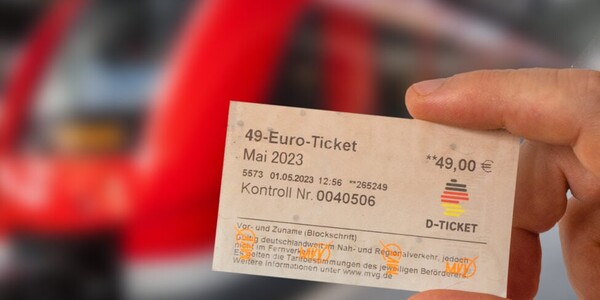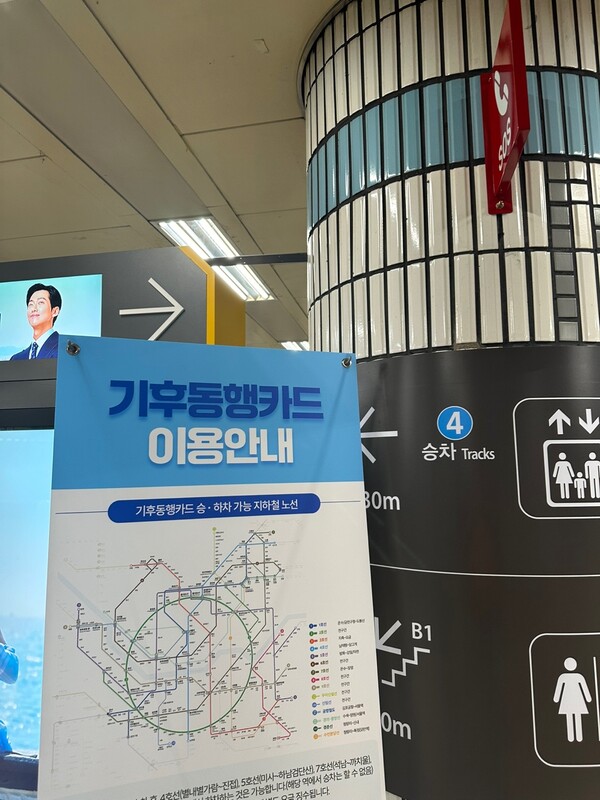The Climate Companion Card has been in the news lately. This card is an integrated public transportation pass designed by the Seoul Metropolitan Government that allows unlimited rides on the subways, buses, and Seoul Bike in the Seoul area for 30 days with a single monthly charge. The Seoul Metropolitan Government was surprised by the early sales, as it had set a target of 500,000 tickets, and is even expecting more sales in March, when school starts, as February is a month with fewer work days. On the other hand, a large number of Seoul citizens who want to save on transportation costs are trying to purchase the Climate Companion Card, but there is not enough stock. In this article, the Dongguk Post will take a look at why the card is becoming so popular and how it differs from other programs that save money on transportation.
A Sustainable Solution for Seoul Transportation

The Climate Companion Card originated from the Seoul Metropolitan Government’s integrated public transportation commuter pass policy announced on September 11th, 2023. The mobile and physical cards were released on January 23rd, 2024, and the pilot project is planned to run from January 27th to June 30th, 2024. The idea is to reduce environmental pollution by encouraging people to use public transportation and Seoul Bike, instead of private cars. Public transportation includes subways, city buses, and village buses within the Seoul area. Excluded are the Shinbundang Line, subways outside of the Seoul area, local buses, and airport buses. Related subway lines in the Seoul area can be found on the Seoul Metropolitan Government website. The head of Seoul’s transportation demand management team said that the city needed an innovative system to respond to the climate crisis and rising prices, and that the city benchmarked Germany’s unlimited fare system of 49-Euro tickets after seeing how it worked.
The price of the Climate Companion Card varies depending on the service you choose. For 62,000 won, users can ride the Seoul subway and buses, and for an additional 3,000 won, they can ride bicycles. The card is available as both a mobile and physical card. Those who use the Android operating system can get it on their mobile through T-money and pay by bank transfer. Those who use IOS-based mobile phones must purchase and recharge the physical card. Physical cards can be purchased at subway station customer safety rooms and nearby convenience stores, and can be recharged with cash at unmanned charging stations in subway stations. It is important to note that the card must be tagged after using transportation. If you do not tag the card twice when you get off, it will be suspended for the day.
How much can you save on transportation with the Climate Companion Card? Based on the 62,000 won cost of the basic card, it would be worth it if you use it more than 45 times, since a single subway ride costs 1,400 won. In addition, there are additional fees for traveling farther distances, even within Seoul, so it is important to consider not only the number of trips you take, but also the distance you commute. After learning about the purpose and usage of the Climate Companion Card, it seems to be a useful project for university students who travel or commute by public transportation a lot.
About the German 49-Euro ticket

The Climate Companion Card is a system that Seoul benchmarked against the German transportation pass, the German Ticket. We will look at what the German ticket is and how it works, and try to predict what the Climate Companion Card will be like for people. The German Ticket is a German transportation ticket that was introduced in May 2023. It is the successor to the 9-Euro ticket that was temporarily introduced from June to August 2022. It was officially introduced after 52 million of the previous 9-Euro tickets were sold, resulting in a 10% reduction in car traffic, equivalent to a reduction of 1.8 million tons of greenhouse gases.
The ticket covers all metro and suburban trains, trams, and buses for one month, except for high-speed rail. The main difference from the Climate Companion Card is that the German ticket is valid throughout the whole country. The 49-Euro ticket was purchased by more than 3 million people on launch day alone, which is a significant price advantage as previously sold regional transit passes cost an average of 72 euros. Also, depending on the distance, passes can cost upwards of 200 euros, so the government anticipated strong demand from office workers who commute to work in residential areas far from large cities. The company is also working to make the card compatible with other regions outside of a specific city, which is expected to attract more users.
On the other hand, civil society organizations criticize the 49 euros as unaffordable people with low-income. This has been blamed on local governments, which may offer discounts for certain groups of people, or offer cheaper local tickets or free tickets for students and seniors. While the 49-Euro ticket is controversial in terms of price, it is positive in terms of attracting large numbers of people to use public transportation. In the first days of sales, 750,000 people who did not have a public transportation pass bought the card, and there is an expectation that 11 million existing pass holders will use the 49-Euro ticket.
Public opinions on the Climate Companion Card

What do people think of the Climate Companion Card? The most common complaint about the Climate Companion Card is its coverage area. It is limited to transportation within the Seoul area, which limits the number of users. Therefore, due to its available area limited to the Seoul area, there is a concern that people would be confused, considering metropolitan buses and Gyeonggi-do buses travel within the Seoul area which the card is unavailable. There are about 1.1 million people in Gyeonggi-do who commute to Seoul, and it is criticized that not being able to use the card on the red buses and the Shinbundang Line that connects Gyeonggi-do and Seoul does not fit the purpose of reducing vehicle usage. Greenpeace, an environmental organization, also said that the scope of benefits of the Climate Companion Card should include the capital area to effectively reduce carbon emissions, considering the most carbon-intensive sections around Seoul are those connecting the capital with roads outside of the city.
Commenting on the fact that the scope of benefits is limited to Seoul, Seoul Mayor Oh Se-hoon said that it was inevitable in order to implement the project quickly. He said that the project would be delayed if it was implemented after consultation with neighboring Gyeonggi-do and Incheon, and said that he held a meeting on January 26th to urge the participation of Gyeonggi and Incheon. In fact, Incheon, Gimpo, and Gunpo have expressed their intention to participate in the Climate Companion Card, which is expected to expand the scope of the service. In the case of the German 49-Euro ticket, the response from citizens in large cities with well-developed transportation infrastructure was very positive. Likewise, expanding the service to Gyeonggi-do seems to be key to ensuring that the Climate Companion Card is evaluated as an effective policy and receives positive responses.
When comparing the Climate Companion Card to the German 49-Euro ticket, the two policies share the goal of promoting local public transportation use, but differ in coverage, price, and available modes of transportation. The Card is focused on encouraging public transportation use in Seoul, and while the price varies depending on the service you choose, it covers subways and buses in the Seoul area for 62,000 won. The card is planning to expand its service coverage through consultations with neighboring regions outside of Seoul, which is expected to attract more users. While the Climate Companion Card has received positive responses in terms of encouraging the use of public transportation to protect the environment, there are also concerns about its limited coverage. In response, Seoul plans to expand its coverage through consultation with neighboring areas, which is seen as an important task for the success of the policy. Donggukians who have been burdened by transportation costs should consider purchasing the Climate Companion Card to save money on transportation costs and join the climate protection.

